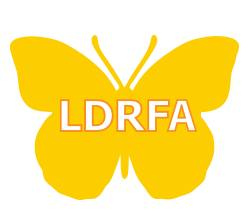By Erin Rodriguez
Table of Contents
ToggleYour child has dyslexia. Or ADHD. Or Sensory Processing Disorder. Or a combination of all three topped with something else.
How do you find the best special education school for your son or daughter? A place that will understand just how special he or she is and nurtures a lifelong love of learning? Turns out, there are steps to help you determine which school is the perfect home away from home.
Avid Advocate
As the parent to a Learning Disabled or ADHD student, you are the first and most important advocate for your child. It is important to have a solid understanding of what you want for your child and ensure it is on the IEP and/or 504 plan. Recognizing the meaning of “inclusion” and “least restrictive environment”, two rights that are part of the Individuals with Disabilities Education Act (IDEA), will ease the transition into a successful student.
Inclusion
Beginning with the landmark case of Brown vs Board of Education in 1954, the idea of “inclusion” was formed to allow ALL students, regardless of race, religion, or socio-economic status to attain the same quality of education. As understanding and recognition of learning disabilities and ADHD/ADD improved over the following decades, this same law for inclusion became the umbrella concept for students with disabilities.
Depending on the private schools , some LD/ADHD ,specific learning disability students are placed in separate classrooms, away from their peers. If you, as the advocate, feel this is not the right environment for your child and wish to have your student placed in general education classrooms, then the concept and laws governing inclusion will become very important.
There are many benefits for inclusive classrooms and educational environments. For example, students develop a broader understanding and acceptance of differences, are held to higher expectations, have greater access in the curriculum, and reap the benefits of increased parent participation and community support.
Least Restrictive Environment (LRE)
Understanding the LRE begins with grasping the concept of free and appropriate public education (FAPE). While the exact definition of appropriate has been argued by legal scholars and politicians for decades, there are plenty of examples that help provide support and services for each unique LD/ADHD student. When looking for the right high school for child with a learning problems , knowing where the school stands on the idea of LRE is very important in the decision-making process.
Placement
Having set goals and objectives based on factual knowledge is imperative for determining the best environment for your child. There are circumstances when being in a general education classroom really is not in the best interest of the LD/ADHD student. LRE helps determine where and how a children with learning disorders is to receive support and services, including times when leaving the general education classroom is necessary. Here is are two examples:
*The student is not reading at grade level. Learning to read and attempting to bridge reading gaps while in the standard classroom could result in lowered self-esteem, withdrawal, and lack of motivation. In this case, a better option might be for the LD/ADHD student to move to a resource room with other, equally matched students in a small group setting.
*The student has severe sensory processing issues that trigger a higher frequency of out-of-control attention deficit hyperactivity disorder adhd episodes. A busy classroom with other students may not be the ideal place for this student. The student might need a smaller, quieter space to regain equilibrium and apply coping mechanisms.
Final Decisions
There are many issues to consider when figuring out the ideal school for your LD/ADHD child. Least Restrictive Environment and inclusion practices are on a case-by-case basis and the charter schools special education department should have a variety of options for you to consider.
If they do not, then that school may not be the best placement for your child. The right choice only comes when all goals and expectations have been created and implemented, with the primary focus on the student’s needs. Knowing and understanding the guidelines that govern public schools helps you become the best advocate you can be for your child.


